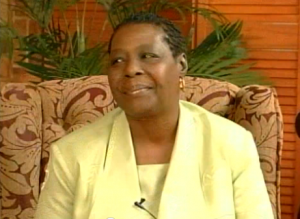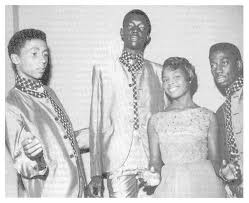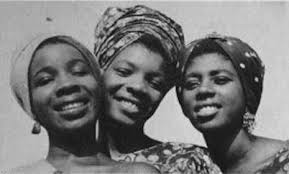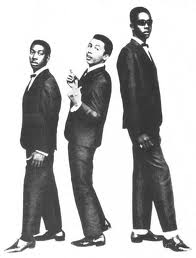
One of the most commonly accepted inaccuracies in popular music is that there is one surviving Wailer, but that is not entirely true.
The surviving Wailer often referred to is Neville O’Riley Livingstone, better known as Bunny Wailer, but Beverley Kelso, a foundation and cornerstone member, is very much alive and well, living in Brooklyn, New York.
She was born in Kingston, Jamaica, in April 1948 and attended Miss Nembhard Prep, and later, the Denham Town Primary School in Kingston.
Kelso was in Jamaica in July 2012 to receive an award for her services to music, at the big Kingsley Goodison-conceived ‘Tributes to The Greats 15 Awards Show and Dance’ at Curphy place.

Outside of that, though, not much has been made of her role in helping to lay the foundation on which the would-be internationally famous Bob Marley and The Wailers was built. Yet, she was most crucial, in more ways than one, to the development of the group.
Kelso’s most obvious contribution may be found on the tracks she lent her harmonious voice to help decorate. Some of those songs included hits like Simmer Down, It Hurts To Be Alone, and Lonesome Feeling.
It was on a bright Monday evening in late 1963 that five teenagers, Robert Nesta Marley, Neville Livingstone, Winston Hubert McIntosh, better known as Peter Tosh, Junior Brathwaite, and the lone female, the confidante of the group and second youngest of the lot, Beverley Kelso, strolled through the gates of 13 Brentford Road, Kingston 5 (later to be known as Studio One) with the hope of creating musical history with four songs – Simmer Down, I Don’t Need Your Love, How Many Times, and Straight And Narrow Way, with Kelso’s voice appearing on all the tracks.

With musical backing provided by the powerful Skatalites band, The Wailers managed to lay Simmer Down, which became a massive No.1 hit in Jamaica in early 1964, riding the top of the charts for several weeks.
It was Kelso’s high-pitched background vocals that provided the perfect balance to the group’s sound. It was so critical, that when she left the group, it became a strenuous and bewildering task to find a suitable replacement that would maintain the original Wailers sound.
With the departure of Brathwaite, whose high-pitched voice complemented Kelso’s, and the inability of long-time group aspirant, Cherry Smith, to fill the void, the group resigned itself to being a trio.
Kelso’s shrill intonations can easily be detected on the recordings Simmer Down and Lonesome Feeling. The latter, in particular, did much to revolutionise the Wailers’ sound with a pumping organ riff by the Vikings Band. That organ was to be heard on other tracks like Cyrusand There’s A Reward by Joe Higgs and Roy Wilson.
Speaking to Kelso from her New York home, she claimed that she recorded 25 songs with the group before making her exit in late 1965 with one titled Let The Lord Be Seen In You. The group desperately tried to hold on to her, going as far as dedicating a song to her, titledDonna.
Speaking to Kelso at Tributes to The Greats in 2012, she said there were issues concerning the direction in which the group was heading and that, to a large extent, influenced her decision to leave.

According to her, she remained a respected confidante and custodian of many a story, as far as the group was concerned.
When Marley was getting married to Rita Anderson on February 10, 1966, Kelso was the only group member who had knowledge of it.
During a dramatic interview with Colby Graham, editor of the Vintage Boss magazine, Kelso relates in dramatic fashion Bunny’s, then Peter’s arrival at her home with the same exclamatory questions, “Bev, yuh did know sey Bob a get married up the road?” Her answer to them was a chilling “yes”.
Kelso played another key role in the Wailers saga when she introduced Rita Marley to Clement ‘Coxson’ Dodd. The association not only brought Rita into the music business, but also brought her into contact with Bob Marley.
It can be said that, in a sense, Kelso unwittingly started the Marley empire.
In a 2004 interview in New York with the Vintage Boss, Kelso expanded on the matter.

“While going to studio from Trench Town, we usually take shortcut through Ninth Street and the Calvary Cemetery and pass by Rita’s house. She usually have a baby in her hand and usually wave at us. The others ignored her, but I felt bad as a woman, and so stopped to say ‘hi’ and play with the baby. When I caught up with them, they were upset about me stopping with her. One afternoon, she told me that she had a song called Opportunity, which she wanted to record. I told Mr Dodd, and he said that I should bring her along. I rushed back to get her, but she was not ready as she had to find her backup singers. She later arrived at Studio One, along with Constantine Walker, who we call Dream, and a girl called Precious. Calling themselves The Soulettes, they recorded the song the following day,” Kelso explained.
Kelso has been living in the United States of America since December 27, 1979, and has also been out of the music business since the Studio One days. Despite that, she has retained fond memories of the family vibe that existed at one of the most-loved musical institutions in the history of Jamaican music.
Making a comeback and writing a book is certainly not off the cards for Kelso. On the musical side, Simmer Down may perhaps be the recording that we may best remember her by.

Perhaps the first call in popular music for the unruly youths to take heed, it warned:
Chicken merry, hawk de near
and when ‘im de near you must beware
so simmer down, control yu temper,
’cause the battle will be hotter.
broyal_2008@yahoo.com


You must log in to post a comment.